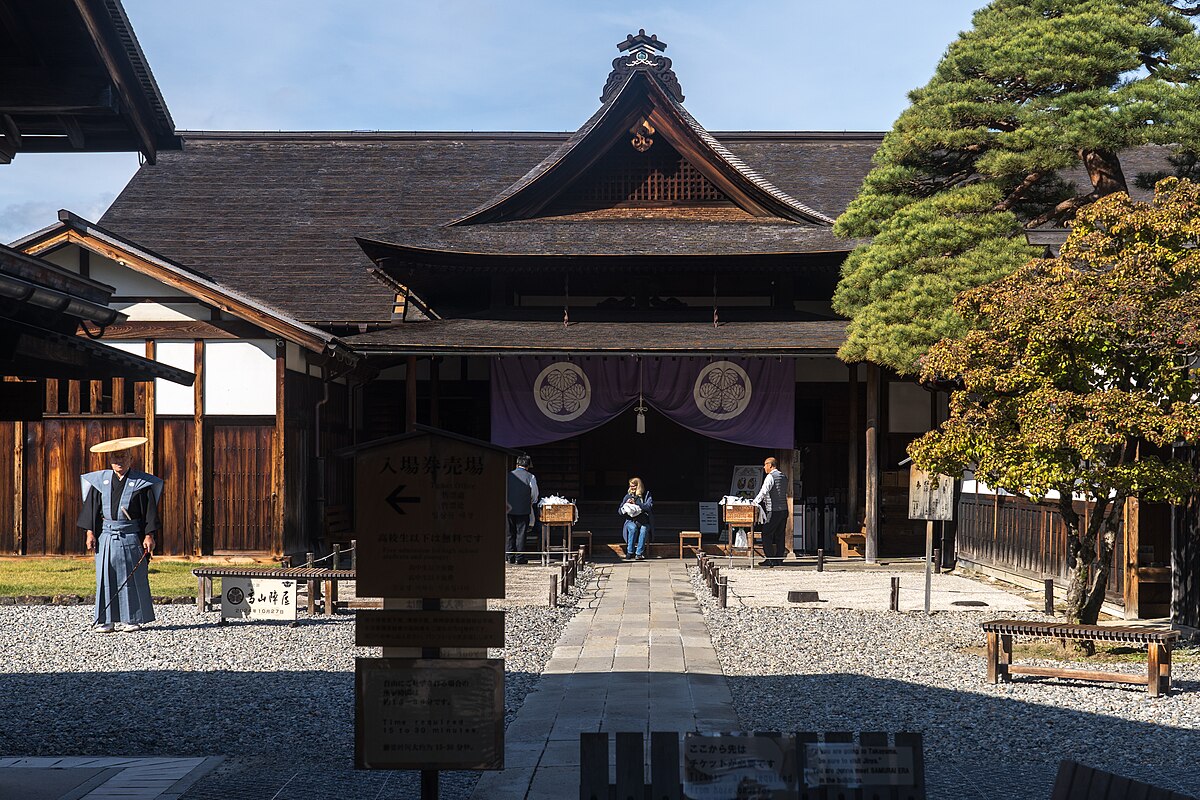Overview (history, characteristics, attractions)
Takayama Jinya is a historic building that served as a magistrate's office and jinya for governing Hida Province (present-day northern Gifu Prefecture) during the Edo period. As the base for local administration during the Edo period, it was used for inspecting taxes, litigation trials, and coordinating civil affairs. It is an extremely valuable example of jinya architecture remaining today, and exhibits that clearly convey what the government office was like in the past, as well as the buildings (accounting hall, study, jail, storehouse, garden, etc.), have been preserved and are open to the public.
Its distinctive features include the accounting office and court room used for business, as well as exhibits of documents and tools that were actually used, allowing visitors to learn about local government and lifestyles in the Edo period in concrete terms. The charm of the old building and garden, the realistic interior layout and everyday tools, make it popular not only with history buffs but also with tourists.
Highlights
- Accounting office and magistrate's office: This is where reception and arbitration took place, and there are exhibits of account books and government tools.
- Shoin and Chief Retainer's Office: You can feel the architectural dignity of the building, with its layout and alcove, which were used as waiting areas for officials and for official events.
- Prison: The detention facilities from that time remain, and you can learn about punishment and how public order was maintained.
- Storehouses and warehouses: Exhibits on the storage of rice tax and the management of government supplies.
- Japanese Garden: Facing the Shoin, you can enjoy the scenery of the four seasons. The fresh greenery of spring and the autumn leaves are especially beautiful.
- Historical materials exhibit: There is a wealth of materials showing the administrative history and lifestyle of the region, such as notices, old documents, photographs, and models.
- Explanations and experiences: There may be explanations by staff, special exhibitions, planned exhibitions, picture-story shows, and explanations that recreate what things were like at the time (depending on the season).
Access (nearest station, transportation, etc.)
The nearest station is Takayama Station on the JR Takayama Main Line. It is within walking distance from the station, approximately a 10-15 minute walk. You can get off at a nearby bus stop by taking a local bus (such as Nohi Bus) or a sightseeing bus from in front of the station. It is about a 5 minute taxi ride away.
Examples of major routes:
- JR Takayama Station → Walk: Approximately 10-15 minutes (access while heading towards the old town)
- JR Takayama Station → Local bus: Take the city loop bus or sightseeing bus and get off at the "Jinya-mae" stop (operating routes change depending on the season, so check the local timetable)
- By car: There are parking lots scattered around the city center (fees apply), so you can use those and then walk to the site.
Estimated stay (estimated time required)
- Short visit: 20-30 minutes (just look at the main rooms and gardens)
- Thorough visit: 45-60 minutes (if you read the exhibits and look closely at each facility)
- If you want to learn more about the history and exhibits: 1 hour or more (more time needed if you include explanations and special exhibits)
Nearby spots
- Takayama's Old Town (Sanmachi Street) - a tourist attraction lined with traditional merchant houses, workshops, and souvenir shops.
- Takayama Festival Yatai Hall — A facility where the gorgeous floats of the Takayama Festival are permanently exhibited.
- Miyagawa Morning Market (Miyagawa Morning Market) — A seasonal morning market featuring fresh local produce and folk crafts.
- Hida Folk Village (Hida no Sato) - An open-air museum where old houses, including Gassho-style houses, have been relocated and preserved (it's a little far, but about 10-15 minutes by car).
- The Kusakabe Folk Crafts Museum and Takayama Jinya area, as well as the museums and traditional Japanese cafes, are perfect for historical strolls.
Things to be aware of (crowds, manners, seasonal precautions, etc.)
- Crowds: It gets crowded during Golden Week, summer vacation, the Autumn Takayama Festival (spring and autumn festivals), and the New Year holidays. If you want to take your time looking around, we recommend visiting on a weekday or early in the morning.
- Shoes and Manners: Inside, there are tatami-floored rooms and dirt floors, and there are areas where you must take off your shoes to view the exhibits. There are also areas where you will need to walk around in socks, so please be careful of the condition of your toes.
- Photography etiquette: Photography is permitted in most areas, but there are some exhibits that prohibit flash photography, tripods, and commercial use. Please follow the instructions of exhibit staff and the explanations on the exhibits.
- Barrier-free access: As this is a historic building, there are many steps, narrow passageways, and stairs, making it difficult to move around in wheelchairs or with strollers. We recommend that you inquire at the official website or facility in advance.
- Seasonal clothing: In winter, the high mountains are very cold, and the roads are often frozen or snowy. Wear warm clothing and comfortable shoes. In summer, the basin can be very hot.
- Check official information: Opening times, closing days, admission fees, and whether or not there are special exhibitions are subject to change, so be sure to check the latest information on the official website or tourist information center before visiting.
Takayama Jinya is a valuable place where you can experience the real state of local government in the Edo period. Touring it along with the old townscape will give you a deeper sense of the history and culture of Hida Takayama.


